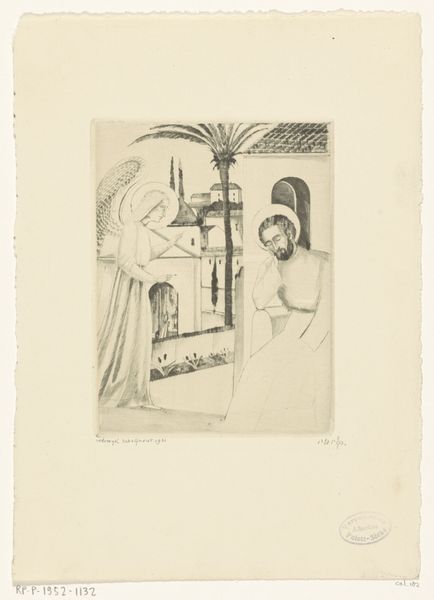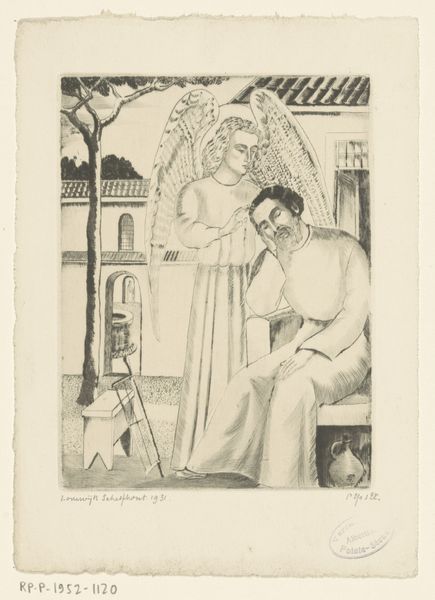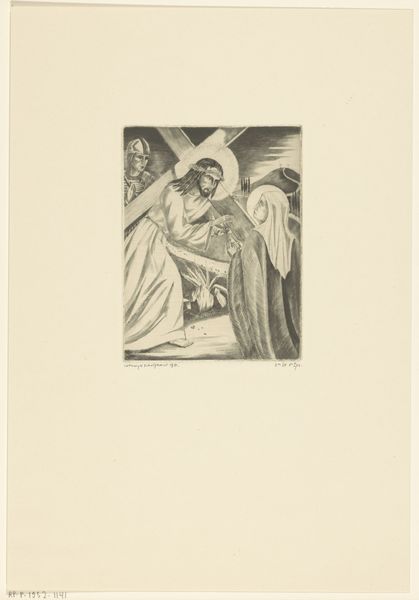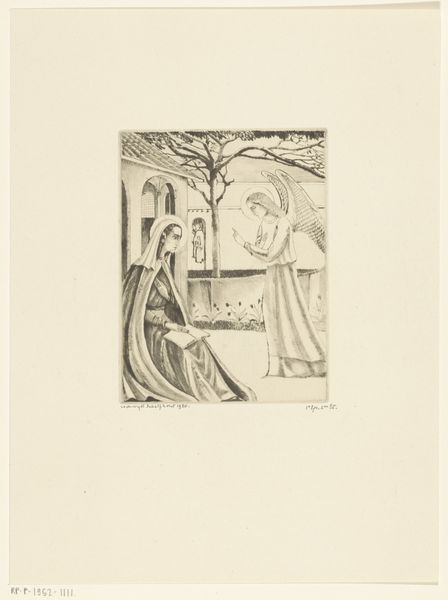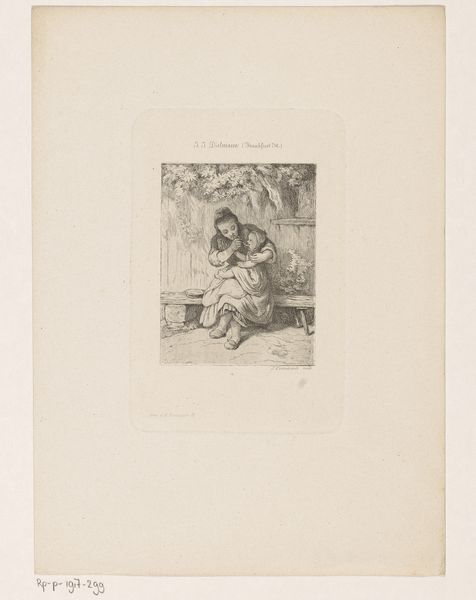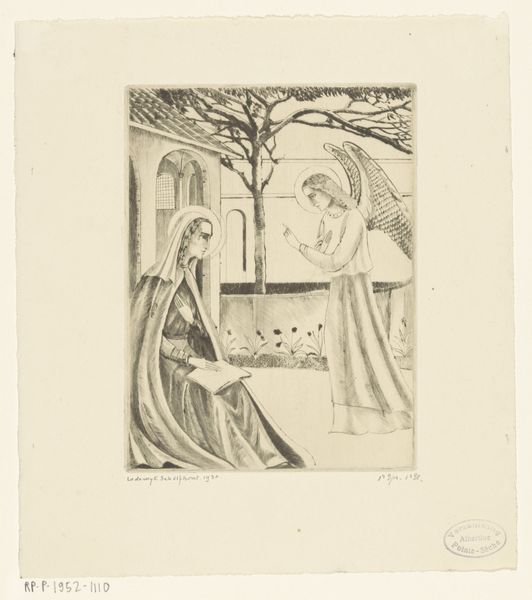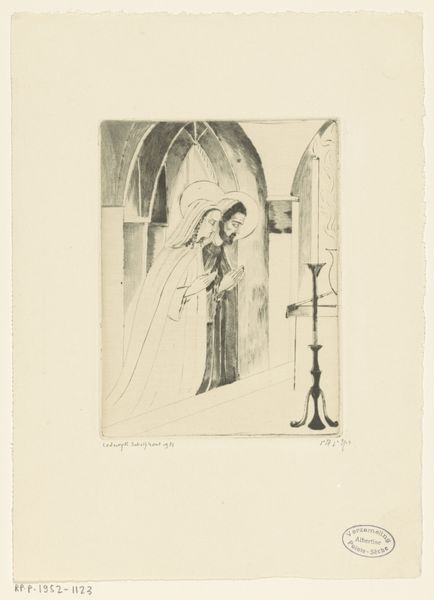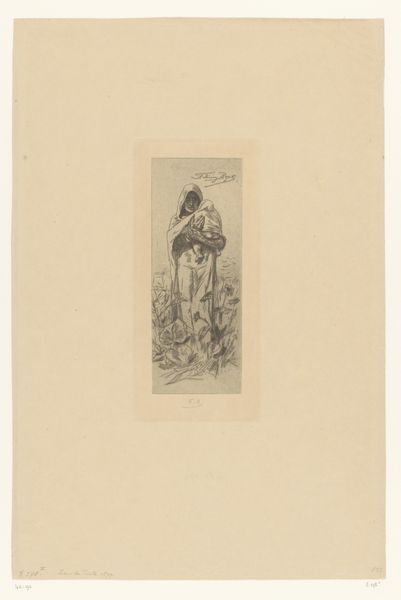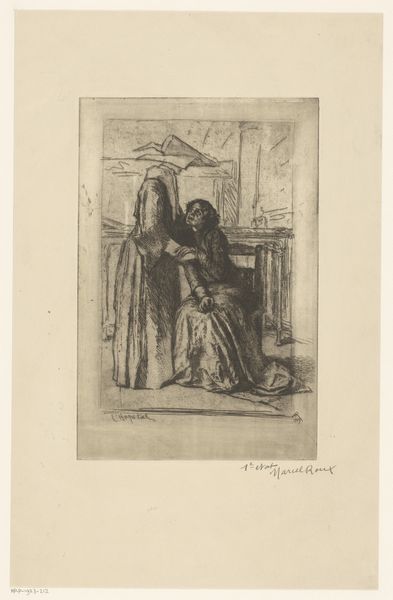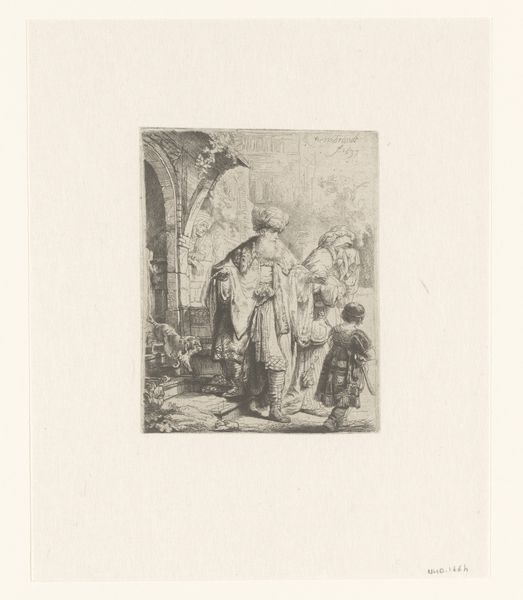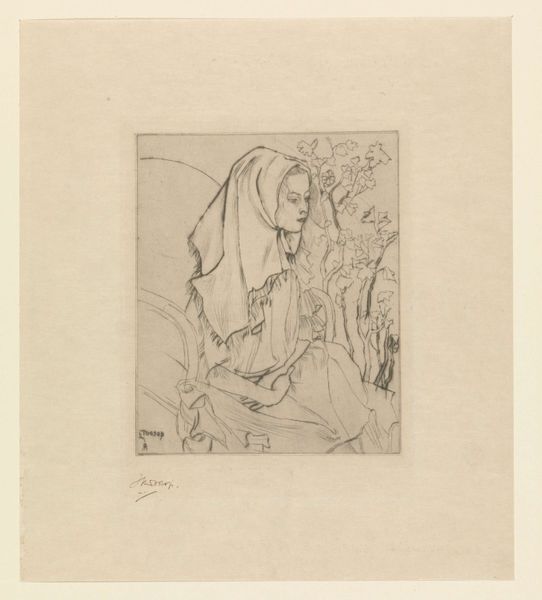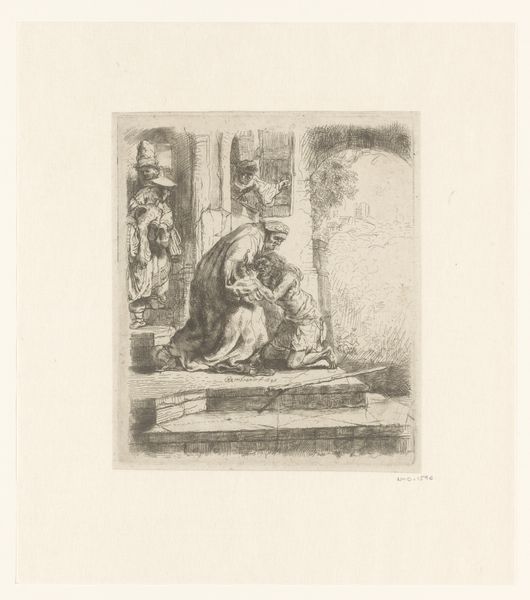
drawing, print, etching, paper
#
portrait
#
drawing
#
narrative-art
# print
#
etching
#
landscape
#
figuration
#
paper
Dimensions: height 160 mm, width 122 mm
Copyright: Rijks Museum: Open Domain
Curator: This is Lodewijk Schelfhout's "Jozefs droom," or "Joseph's Dream," an etching from 1931 currently held at the Rijksmuseum. Editor: The immediate impression is one of quietude. The muted tones of the etching contribute to this feeling, creating a scene bathed in a subdued, dreamlike light. Curator: Indeed. Schelfhout captures a critical moment in the Christian narrative. Joseph, having learned of Mary's pregnancy, is visited by an angel in his sleep, who assures him of Mary's purity and the divine nature of the child she carries. It addresses the patriarchy, looking at how social expectations shape family structures even through the supernatural. Editor: The composition strikes me. The angel, rendered with an almost classical smoothness, gently guides Joseph from his slumber, the very lines are softer where their bodies almost touch, marking an encounter of the material with the ethereal. Curator: Precisely. Note how Joseph is framed. He's seated in what appears to be an outdoor space, but still confined, representative of the social constraints and expectations placed upon him and Mary during this period. It's a moment pregnant with socio-religious consequences. The angel’s gentle gesture almost seems like it's a hand removing these burdens and bestowing protection. Editor: Schelfhout's mark-making is subtle, particularly within the angel's wings and Joseph’s beard, but very decisive. This kind of precise linework evokes, I think, a contemplative, almost mystical atmosphere. Curator: It's also a powerful visualization of faith. Schelfhout situates the divine within the everyday. Consider also the backdrop -- a conventional architectural construction representative of patriarchal order. And right beside Joseph's seating is placed a jug, and on the other side, in contrast, there's broken, disordered building implements – the message to me being one of domestic realignment. Editor: Yes, there's a sense that Joseph is also presented as the vulnerable man here, troubled, in repose, deeply in thought. His submission contrasts greatly with the winged messenger of light behind. Curator: Ultimately, Schelfhout invites us to reflect on themes of faith, acceptance, and the radical social implications that faith sometimes demands. Editor: It’s remarkable how a work composed with such limited means is charged with profound meaning, using a masterful balance of light and shadow, form and tone to guide our contemplation.
Comments
No comments
Be the first to comment and join the conversation on the ultimate creative platform.
